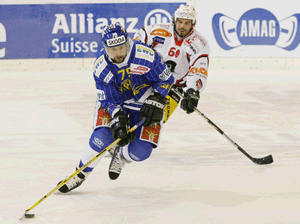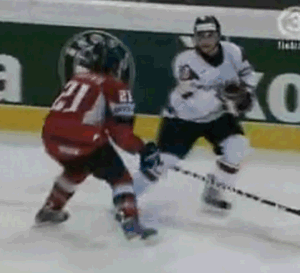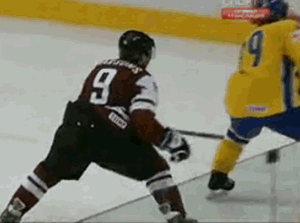Ice hockey is a bruising game that demonstrates the physics involved with collisions.
See curling for more on collisions.

Momentum is the product of velocity multiplied by mass. A person with a large amount of momentum is harder to stop than one with a small amount of momentum.
Players increase their momentum by increasing their speed on the ice. Upon collision some or all of their momentum is transferred to the other player involved in the collision. This increases the velocity of the opponent while reducing the speed of the attacking player if collided head on.
This is exemplified in manoeuvre called checking, as shown on the right. Notice how the red player accelerates towards the player in the white jumper thus increasing his own momentum prior to the collision. After the collision the player in white has a greater momentum and thus is accelerated into the boards.

During a collision, on smooth surfaces, momentum is conserved. That is, the sum of the momentum of both objects involved before the collision, is the same as after the collision.
Consider the collision pictured on the right. The player in red accelerates towards his opponent. After the collision the red player moves slower than before. This means he has lost some momentum to the player in yellow. The player in yellow now has a greater momentum and is accelerated towards the boards.

3) Momentum is the product of mass and velocity (mass X velocity).
a) What two things can a player do, during the off season, to increase their momentum?
b) What can a player do during the game to increase their momentum?